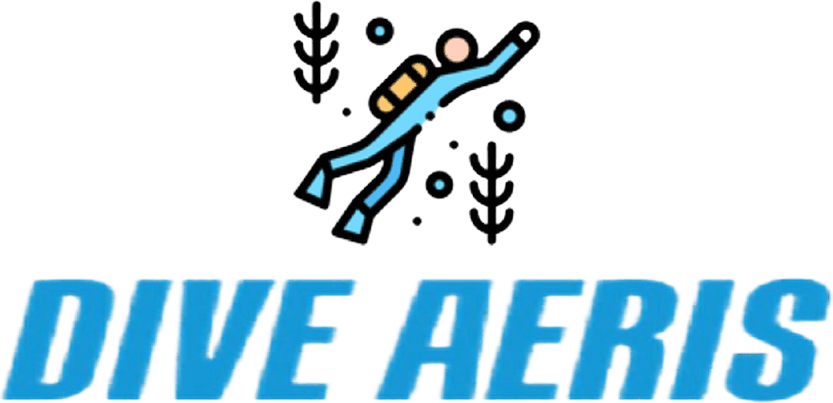When it comes to scuba diving, South Florida is a promising destination for numerous reasons. First of all, it offers excellent water visibility along with crystal-clear waters and a calm surface. Besides, this location also boasts a flourishing ecosystem as well as stunning seascapes.
Although it is true that summer offers the most reliable diving conditions, you can dive in South Florida all year round. Morning adventures give you fantastic opportunities to scuba dive with sharks and manatees, while some dive spots are perfect for underwater photography.
It is not an easy task to decide which is the best dive site; hence, I have compiled a list of top choices for different needs. In addition, I have also attached a detailed guide about when to go as well as where to stay when scuba diving in South Florida. So, let’s get started!
Table of Contents
Top 6 Mind-Blowing Dive Sites in South Florida

There are endless diving destinations across South Florida, and each site has its own upside and downside. To help you make a better decision, this section will comprehensively review the top 6 best dive spots in South Florida, along with their own key features.
1. Blue Heron Bridge
Located off Riviera Beach, this dive spot is an excellent decision for all experience levels, thanks to its ideal weather conditions and accessible entry points. In addition, this pristine location is also favored by most snorkelers due to its shallow depths.
Blue Heron Bridge comes with an abundance of tropical life, including reef fish, octopi, flounder, skates, and rays. It provides sea creatures with nutritious sea grasses where nudibranchs, seahorses, eels, and mantis shrimp make their home.
In the meantime, the underwater world attracts a lot of giant critters as well. Some popular larger fish can be quickly listed, such as snappers, barracuda, batfish, frogfish, pipefish, etc. You will also have frequent encounters with green sea turtles without scuba diving in Hawaii.
With a wide range of oceanic animals to see, Blue Heron Bridge is truly incredible for wide-angle photography. For macro photographers, schools of vivid angelfish are a fabulous backdrop to capture fantastic footage. See cost-efficient underwater cameras in case you have no item.
Besides, although dives in Blue Heron Bridge mainly range between 5 and 20 feet, this place can serve nitrox divers perfectly. If you love technical diving, do not forget to wear a pair of scuba fins to extend your bottom time. Use a dive computer to avoid staying underwater too long.
In case you have never used a dive computer before, see the following article to get a comprehensive guide: How to Use a Dive Computer.
Excessive dive time leads to many dangers like heat loss and gas narcosis. Learn more details by reading my article: How Dangerous Is Scuba Diving.
In general, the diving conditions of Blue Heron Bridge are fantastic, with warm waters all year round as well as a unique terrain protected from swells during winter months. However, this dive site offers high tides; thus, you should make sure to check the weather report before any visit.
The following video gives everything you should know when planning a dive on Blue Heron Bridge.
2. Hog Heaven
Hog Heaven is a barge lying off the coast of Fort Lauderdale, now functioning as an artificial reef. This wreck is at about 50 to 65 feet under the surface; hence, it will be highly accessible by entry-level divers with proper gear.
When entering the wreck, you will effortlessly spot diverse marine life, including spiny lobster, parrot fish, barracuda, snappers, angelfish, and so on. Additionally, the barge is covered with colorful and beautiful corals, which draw hawksbill turtles to visit.
In addition, you can even find flatfish on the sandy bottom while it is simple to realize vibrant sponges growing from rocky surfaces.
See how fascinating wreck diving in Hog Heaven is with the following video.
3. 1000 Mermaids
1000 Mermaids was named after a project that aims to boost ecotourism as well as responsible diving. The project will place 1000 statues which will replenish a dying reef off Riviera Beach when completed. These artificial reefs play a vital role in fostering the growth of corals.
Until now, there are more than 20 statues of real people that have already been submerged at 45 feet in the water. This offers a perfect habitat for various sea animals such as barracuda and rays. Besides, this place is also home to octopuses, eels, and reef fish.
Tropical reef fish species are common sightings in 1000 Mermaids.
4. West Palm Beach
This dive site is the perfect combination of excellent water visibility, gorgeous coral reefs, and abundant sea life. Additionally, it also offers an ideal breeding ground for different oceanic creatures such as sharks and whales.
That’s why West Palm Beach is an indispensable destination on the migratory path of huge critters. Therefore, when diving here between May and September, you are likely to have more chances to interact with common pelagics like sea turtles, sailfish, and so on.
I believe that you will feel like visiting an underwater zoo when propelling the body through spectacular coral reefs as well as colorful schools of fish. These incredible diving experiences will be one of the most memorable of your lifetime.
When entering the clear water in West Palm Beach, do not forget to pay a visit to Breakers Reef, where you can admire rich marine life. This two-mile-long coral reef is host to a few tropical fish species, green morays, spearfish, spiny lobster, and more.
If you visit Breakers Reef between spring and summer, it is highly possible to see green, hawksbill, and loggerhead turtles. However, a significant disadvantage of this location is that it requires people to have an open water certification to be allowed to dive here.
West Palm Beach is an excellent destination to enjoy drift diving in South Florida.
5. Fort Lauderdale
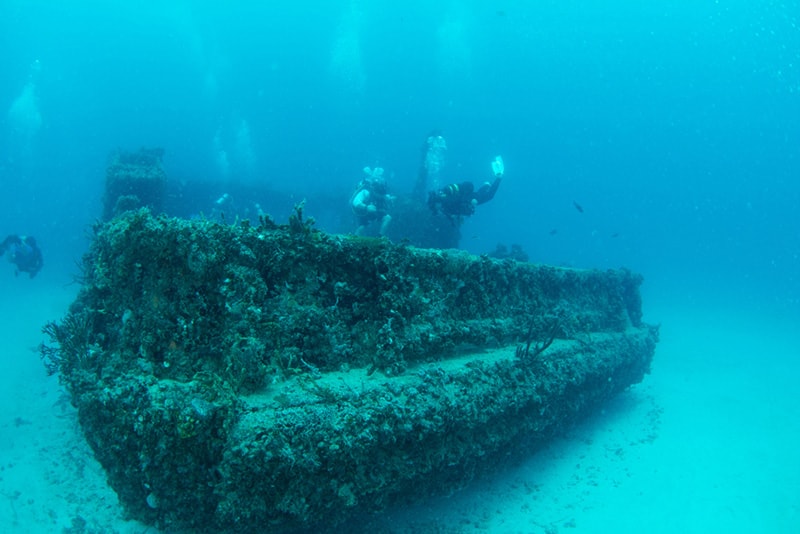
With an average water temperature ranging from 72-80 degrees Fahrenheit, this dive spot is the best choice for divers during the winter months. Besides, Fort Lauderdale can outweigh other diving destinations in South Florida because it enables you to dive on a coral reef without hiring a boat.
You just need a five-minute swim from the shore, and then a magnificent underwater world will be open to your eyes. See other benefits of swimming when scuba diving with the article: Do You Need to Know How to Swim to Scuba Dive.
Always remember that the Barracuda Reef and Hammerhead Reef are the two most notorious locations to see in Fort Lauderdale, in case you have no idea of where to go.
While divers of all levels can explore Barracuda Reef, only advanced people are highly recommended to visit Hammerhead Reef. Barracuda Reef has a more prosperous marine life. Meanwhile, Hammerhead Reef will best suit coral lovers as well as underwater photography.
In case you want to take stunning pictures of sea creatures in Fort Lauderdale, keep in mind to pack a GoPro in your suitcase. That’s because I make sure the sea life here will not let you down. Nurse sharks and stingrays are rare animals, but you can find them here.
Additionally, Fort Lauderdale is a paradise for wreck diving as well. This place is home to some of the most well-known wrecks in the world, including Kay Scutti, Tracy, and Merci Jesus.
It is a pity if you skip visiting these sites where rare creatures like bull sharks, stingrays, hogfish, and lionfish make their home. The light conditions for wreck diving are often weak, so do not forget to bring a scuba light to see more clearly.
For technical divers or professional people, Fort Lauderdale provides them with excellent opportunities to challenge their limits. There are three oil rigs commonly known as Tenneco Towers at a depth of around 200 feet.
You will need at least a scuba tank to spot vibrant sponges, coral-encrusted pillars, and glorious reef fish. If you want to see more details, diving with two tanks is advisable. Also, I suggest you include a set of scuba regulators to facilitate breathing underwater.
Check the awesome video below and see what the Barracuda Reef can show you.
6. Jupiter
Jupiter is the best place to spot Goliath Grouper between August and September. That’s because this location boasts three shipwrecks: Zion, Miss Jenny, and Esso Bonnaire. These wrecks not only function as artificial reefs but also offer a mating ground for Goliath Grouper.
In addition, diving in Jupiter provides you with incredible chances to see local sawfish, reef sharks, nurse sharks, giant stingrays, green moray eels, and loggerhead turtles.
Jupiter is suitable for diving all year round, and at the same time, it is one of a few places in South Florida that gives the most transparent water. Nevertheless, this dive site is only perfect for advanced divers due to high waves and strong winds.
Watch the video below and see how exceptional scuba diving in Jupiter is. Explore Area 51’s magical underwater world.
Divers Guide
This part will equip you with helpful knowledge about keeping your dive safe, as well as how to communicate with your buddy while diving. In addition, there is some important information about diving conditions in South Florida that you should keep in mind.
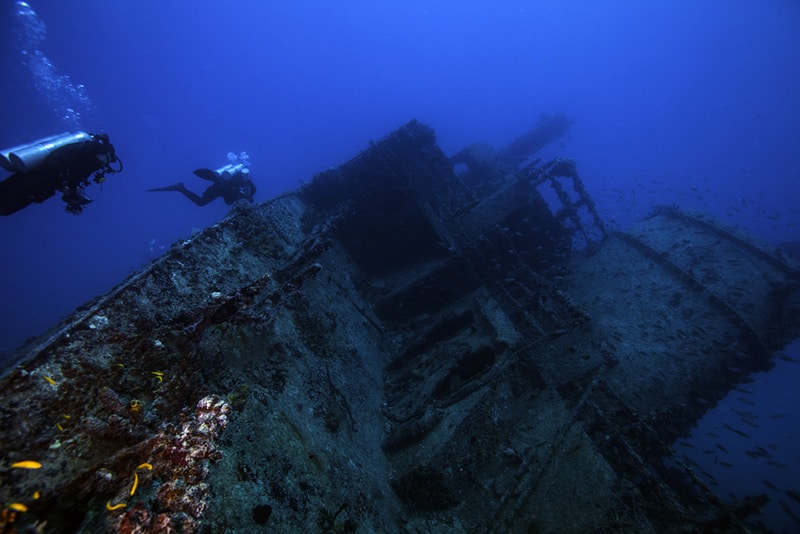
1. Diving Conditions
Water visibility ranges from 30 to 75 feet. In the meantime, the water temperature is usually 68 degrees Fahrenheit during wintertime and 87 degrees Fahrenheit in summer. Therefore, you will need to wear a 5 mm wetsuit when diving in South Florida.
Fort Lauderdale can be easily reached by taking a flight. To arrive at other dive sites in South Florida, you should hire a car for easy transportation.
2. Scuba Diving Hand Signals
Scuba diving hand signals not only facilitate communication among team members but are also really essential in emergencies.
Thanks to these nonverbal means, it is easier for you to understand what your divemaster is talking about or instructing you to escape an aggressive white shark.
Fortunately, scuba diving hand signals are easy to learn. Thanks to that, you still have exhilarating diving experiences while enjoying this pastime safely. Below are some of the most common hand signals that every diver should know before any trip.
Going up/Ascend

To indicate “you want to go up,” you give your dive buddy a thumbs up and jerk it upwards so that other teammates know the direction you wish to take. If you need another member to follow you, then add subsequent hand signals.
This hand signal ensures that people do not dive beyond their limits. To avoid fatal accidents, you must always keep diving at your comfort level when below the surface.
Novice divers often do not know how deep they should go; thus, they should read my article “How Deep Can You Scuba Dive” to find out!
Going Down/Descend

A thumbs down means “I want to go down” when you are underwater. Jerk your thumb downwards so that your dive mates understand you are going toward the ocean floor.
Similar to “going up,” you need to combine this gesture with subsequent hand signals to show that you need other people to follow.
Something is wrong
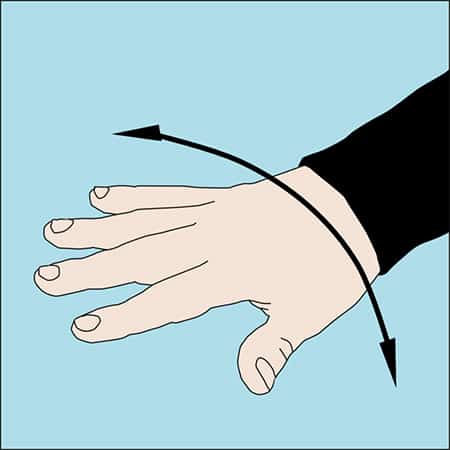
This is another hand signal that all scuba divers must memorize. Extend your flattened hand, palm down, and rotate it slowly from side to side to indicate that you are in trouble. To let your buddy know precisely where something is wrong, point out the source of the problem.
For example, if you have an ear equalization problem, point your finger to your ear to indicate this. Besides, the “something is wrong” signal is identical to the “so-so” hand gesture in standard conservation on the land. Remember this to avoid making a mistake when communicating.
In addition, in case you are in an emergency, it is wise to use the “emergency” hand sign first to ensure your life is not threatened.
I am OK!
The “OK” hand signal may be one of the first signs that divers of all levels learn. On land, you give a thumbs up to show that you are okay, but you cannot do this underwater. Instead, you create a circle with your thumb and forefinger while extending the other three fingers.

If you are wearing scuba gloves, it may be hard to splay the third, fourth, and fifth fingers completely. In this case, you just only need to slightly create the circle with your thumb and forefinger.
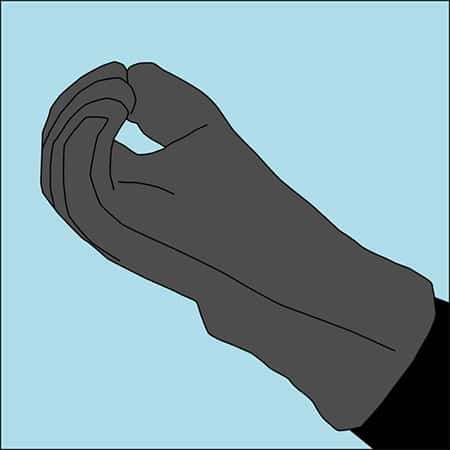
For diving in darkness or low light conditions, the “OK” hand signal can be too small to see from a long distance. Hence, you should make a fist and bop it on the head. Alternatively, you can make the letter “O” by using both hands above your head.
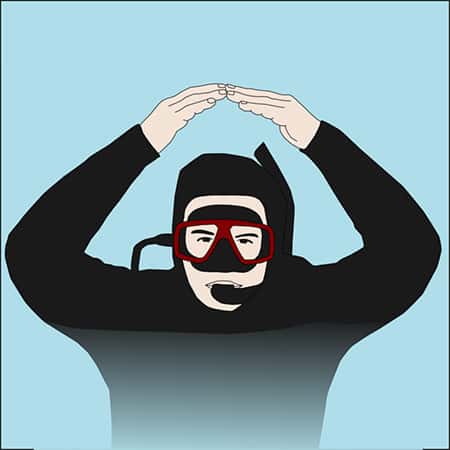
Stop

There are two methods to warn your fellow divers of the dangers if they keep going. The first way is to hold up a flat hand and palm forward, which is similar to what a traffic officer often does.
The other way is to make a fist, extend the arm out in front of you, and bend the hand up at the wrist. To avoid confusion in using which “stop” hand signal, you and your dive mates should decide before any trip into the blue.
See more diver communications here.
Top Diving Centers in South Florida
Below is a list of the top four reliable dive operators in South Florida. I have attached the telephone and website addresses of each dive center for your reference.
You do not need to worry if you book a tour at one of the following companies because all of them have received various positive ratings for years.
- South Florida Diving Headquarters – offers scuba training classes, affordable rental equipment, and private charters. Call (954) 783-2299 or visit https://www.southfloridadiving.com/ to get more details.
- Sea Experience – gives incredible scuba diving and snorkeling trips, diving courses for all ages, and suggests famous accommodations. Phone (954) 467-6000 or visit https://seaxp.com/.
- Pura Vida Divers – the best choice for coral lovers, offers technical dives and provides trips to the most famous dive sites in South Florida. Contact (561) 840-8750 and visit https://www.puravidadivers.com/ for further information.
- Divers Cove – operates scuba courses for kids, sells dive gear, and supports guided tours. Call (954) 473-1220 or visit its website at https://www.diverscovefl.com/ to book now!
Best Accommodations in South Florida
The following table compares the most popular options to stay when scuba diving in South Florida. In addition to star and popular amenities, each choice also comes with a link to the main website so that you can check if rooms are available or not.
| Resorts | Star | Popular amenities | Address & Contact |
| Edgewater Beach Hotel | 4 | Pool, beachfront, free Wi-Fi, free parking | ● 1901 Gulf Shore Blvd N, Naples, FL 34102 ● (239) 403-2000 |
| Four Seasons Resort Palm Beach | 5 | Pool, beachfront, free Wi-Fi, spa | ● 2800 S Ocean Blvd, Palm Beach, FL 33480 ● (561) 582-2800 |
| The St Regis Bal Harbor Resort | 5 | Pool, beachfront, air conditioning, spa | ● 9703 Collins Avenue Bal Harbor, Miami Beach, FL 33154 ● (305) 993-3300 |
| Carillon Miami Wellness Resort | 5 | Pool, beachfront, free Wi-Fi, spa | ● 6801 Collins Ave, Miami Beach, FL 33141 ● (866) 800-3858 |
| Acqualina Resort and Residences | 5 | Pool, beachfront, free Wi-Fi, spa | ● 17875 Collins Ave, Sunny Isles Beach, FL 33160 ● (305) 918-8000 |
| Santa Maria Suites Resort | 4 | Pool, free Wi-Fi, air conditioning, breakfast | ● 1401 Simonton St, Key West, FL 33040 ● (305) 296-5678 |
Frequently Asked Questions
Do you have questions related to my article or missed some crucial parts? Let’s see some of the most frequently asked questions below and read my short answers for them. I hope that they can help to clear your thoughts.
How Much Does It Cost to Go Scuba Diving in Florida?
Local dive operators provide you with different sets to fit all ages as well as a few particular trips. You must spend at least $70 for a complete gear package with two tanks, while it is common to pay more than $100 for a three-tank dive trip.
Do I Have to Be Certified to Scuba Dive in Florida?
Florida does not require a certification for diving here. However, if you are not a certified diver, you cannot go very far from the shore.
How Old Do You Have to Be to Go Scuba Diving in Florida?
Kids must be at least ten years old to participate in a scuba training course. If you are a student under 18 years old, you must have parental permission to scuba dive in Florida. Besides, you also must know how to swim as well as be able to swim 200 yards continuously.
Do You Need a Wetsuit to Scuba Dive in Florida?
Scuba diving in South Florida is less chilly than scuba diving in California. Hence, a 3mm wetsuit is the most popular choice among the diver community.
Nevertheless, during the winter months, the water temperature will drop considerably; thereby, you will need to wear a thicker wetsuit to keep warm. For cases, models with 5mm or 7mm thickness will be more suitable. You can also wear your wetsuit with a hood for extra thermal retention.
Conclusion
Scuba diving is fabulous and healthy. However, it can become a nightmare if you do not know where to go as well as what to bring. Moreover, it hides a lot of risks, which means that you must understand safety rules completely.
This article contains a few practical tips you need to maximize your safety and survival. In addition, I also suggest some excellent dive spots to visit at least once in your life. Besides, do not skip critical information about diving conditions to make your trip more comfortable.
I hope my article has equipped you with crucial knowledge about scuba diving in South Florida. If you have any questions, comments, or suggestions, kindly put them in the comment section below. Share this article with other divers by using one of the following social buttons.
Related Articles:
- Scuba Diving in Destin: The Completed Guide in 2023
- Scuba Diving in Sarasota: The Unrivaled Guide in 2023
- Scuba Diving in Venice, Florida – The Completed Guide in 2023
- Scuba Diving in Florida Keys: The Best Guide for Beginners
- Scuba Diving in Pensacola, Florida: All You Need to Know!
- 9 Best Places to Go Scuba Diving in Miami, Florida
